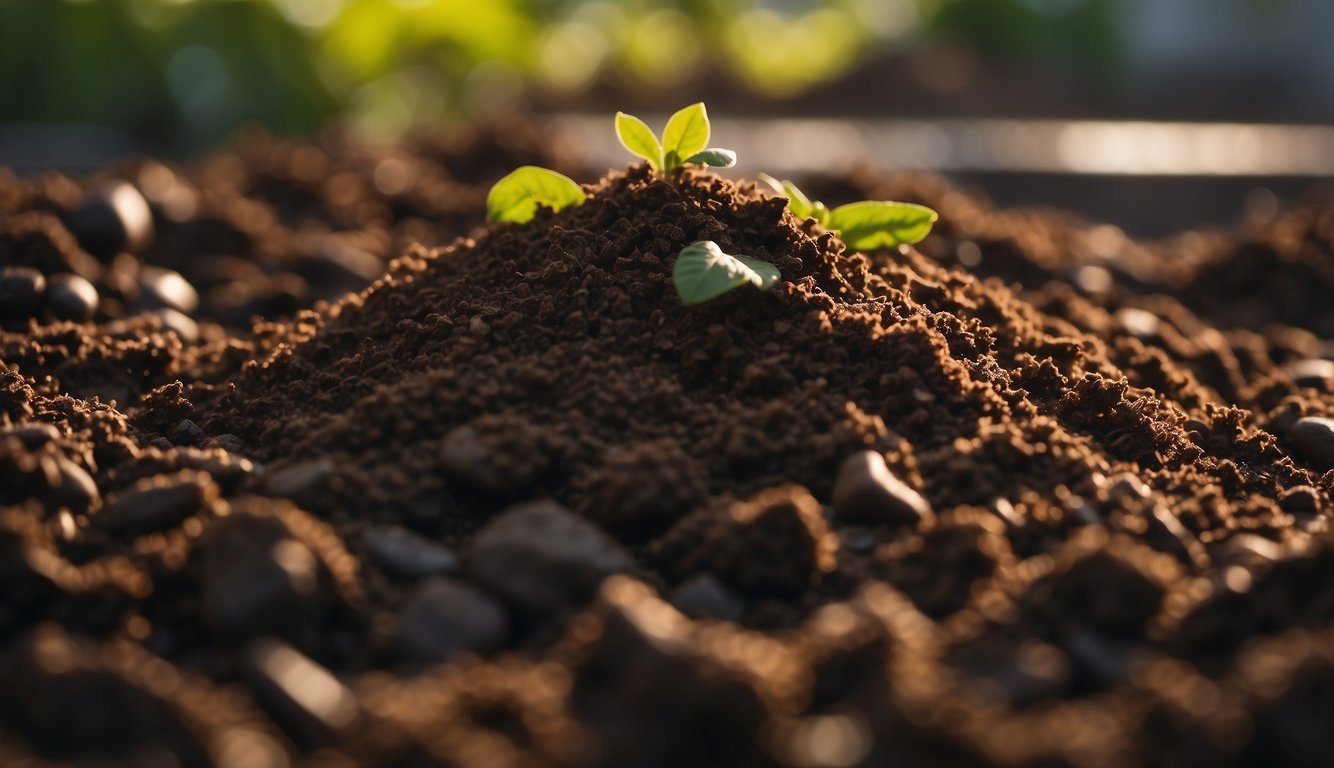TheHerbProf.com is a treasure trove of knowledge for those interested in natural healing and herbal remedies. The website is run by Paul Johnston MD. A naturopathic who has not only received extensive education in the field but also has personal experience in self-healing.
I love coffee, and I’m sure many of you do too. But what do you do with the leftover coffee grounds? Throwing them away seems like a waste, and it’s not very environmentally friendly. Fortunately, there are many uses for unused coffee grounds that you might not have thought of before.
One of the most popular uses for coffee grounds is as a natural fertilizer for plants. Coffee grounds contain nitrogen, potassium, and phosphorus, which are essential nutrients for plant growth. You can mix coffee grounds into the soil or add them to your compost pile to give your plants a nutrient boost.
Another great use for coffee grounds is as a natural deodorizer. You can place a bowl of coffee grounds in your fridge to absorb any unpleasant odors. Coffee grounds can also be used to deodorize your garbage can, shoes, and even your hands after cooking with garlic or onions. These are just a few examples of the many ways you can reuse coffee grounds and reduce waste.
Gardening with Coffee Grounds
As a coffee lover, I always have a lot of unused coffee grounds lying around. However, instead of throwing them away, I have found that coffee grounds can be a great addition to my garden. Here are some ways that I use coffee grounds to improve my garden.
Composting with Coffee Grounds
Coffee grounds are a great addition to a compost pile. They are considered a “green” material, which means they are high in nitrogen. When mixed with “brown” materials like dead leaves or grass clippings, coffee grounds help to balance the carbon-to-nitrogen ratio in the compost pile. This helps to speed up the composting process and creates a nutrient-rich soil amendment for the garden.
Fertilizing Soil with Coffee Grounds – Uses for Unused Coffee Grounds
Coffee grounds are also a great natural fertilizer for plants. They are high in nitrogen, potassium, and phosphorus, which are all important nutrients for plant growth. I sprinkle a thin layer of coffee grounds around the base of my plants and then lightly work it into the soil. This helps to provide a slow-release of nutrients to the plants throughout the growing season.
Pest Repellent
Coffee grounds can also be used to repel pests in the garden. Slugs and snails are repelled by coffee grounds, so I sprinkle a thin layer around the base of plants that are prone to slug damage. Ants are also repelled by coffee grounds, so I sprinkle them around the perimeter of my garden to keep the ants away.
Growing Mushrooms
If you are interested in growing mushrooms, coffee grounds can be a great growing medium. Simply mix coffee grounds with mushroom spores and place them in a dark, humid area. The coffee grounds provide a nutrient-rich growing medium for the mushrooms.
Coffee Grounds for Worms – Uses for Unused Coffee Grounds
Worms love coffee grounds, so I add them to my worm bin to provide a food source for my worms. The coffee grounds are high in nitrogen, which helps to speed up the composting process in the worm bin. This creates a nutrient-rich worm castings that can be used as a soil amendment in the garden.
Overall, coffee grounds are a great addition to any garden. They can be used to improve soil quality, fertilize plants, repel pests, and even grow mushrooms. Plus, they are a great way to reuse something that would otherwise be thrown away.
Household Uses for Coffee Grounds – Uses for Unused Coffee Grounds
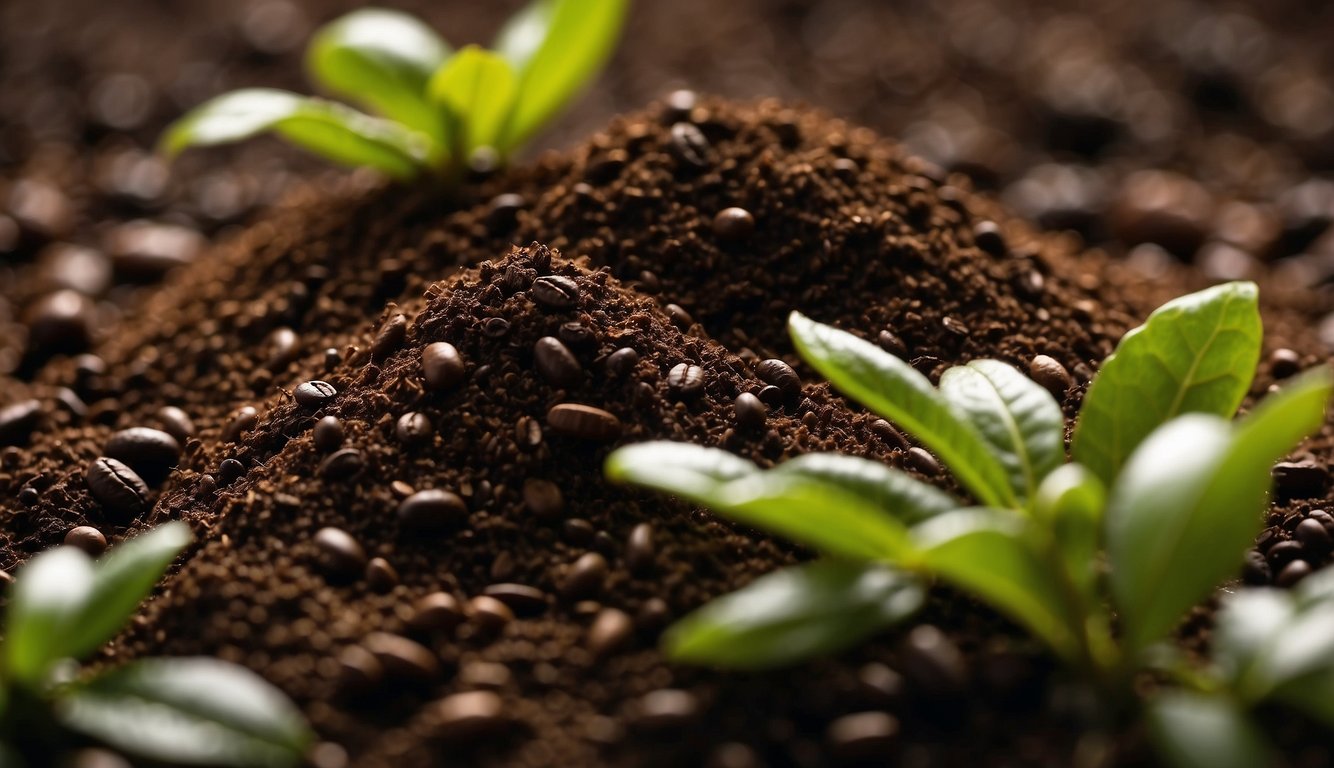
As a coffee lover, I always have unused coffee grounds lying around. But did you know that coffee grounds have several household uses beyond just making coffee? Here are some of the ways I use coffee grounds around my house.
Natural Deodorizer
Coffee grounds are a natural deodorizer and can help eliminate unpleasant odors in your fridge, pantry, or even your shoes. Simply place a small bowl of dry coffee grounds in the area you want to deodorize and let them absorb the odor. You can also wrap the coffee grounds in a breathable cloth and place them in your shoes overnight to eliminate any unwanted smells.
Cleaning Abrasive – Uses for Unused Coffee Grounds
The grainy texture of coffee grounds makes them an excellent cleaning abrasive. Use them to scrub away residue from your pots, pans, and baking sheets. Mix a few drops of dish soap with a handful of coffee grounds and use a scouring pad to get your cookware looking brand new.
Scratch Repair and Wood Stain
Coffee grounds can also be used to repair scratches on dark wood furniture. Mix coffee grounds with warm water to create a paste and apply it to the scratch. Let the paste sit for a few minutes, then wipe it away with a clean cloth. The coffee grounds will stain the wood and help disguise the scratch.
Homemade Dyes and Crafts
Coffee grounds can be used to create natural dyes for fabrics and paper. Simply boil coffee grounds in water and strain the mixture to create a brown dye. You can also use coffee grounds to create a unique texture on paper or to add an earthy color to your crafts.
Overall, coffee grounds are a versatile and eco-friendly household item that can be used in a variety of ways beyond just making coffee. Give these uses a try and see how they work for you.
Personal Care and Beauty – Uses for Unused Coffee Grounds
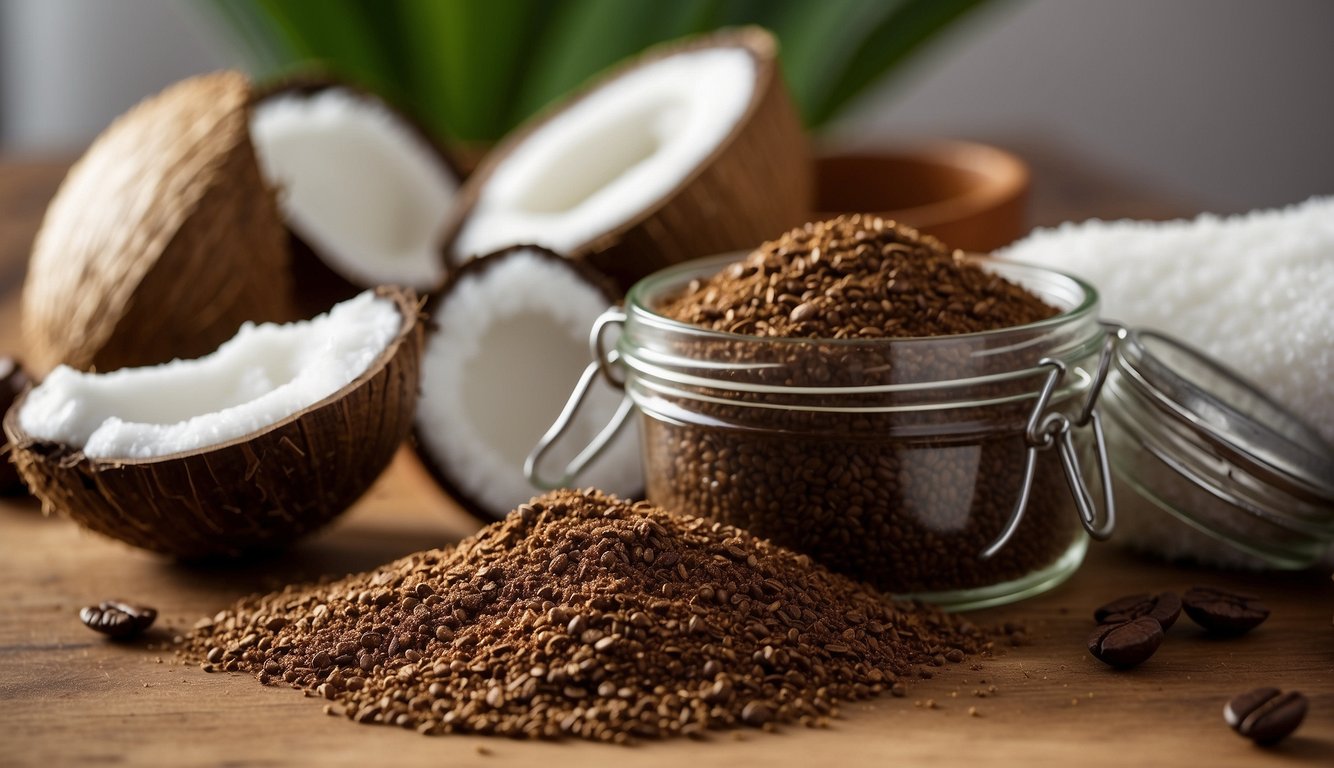
Coffee Grounds for Skin Care – Uses for Unused Coffee Grounds
As an exfoliating scrub, coffee grounds can help remove dead skin cells and leave your skin feeling smooth and soft. They can also help reduce the appearance of cellulite by improving blood flow and tightening the skin. To use coffee grounds as an exfoliating scrub, mix them with coconut oil or olive oil and apply to the skin in a circular motion. Rinse thoroughly with water and pat dry.
Coffee grounds can also be used in homemade soap bars. They add texture and a natural brown color to the soap. To make glycerin soap with coffee grounds, melt a glycerin soap base in the microwave, add coffee grounds, and pour into a soap mold. Let the soap cool and harden before using.
Hair Treatment with Coffee Grounds
Coffee grounds can be used as a natural hair dye to darken hair or cover gray hairs. Mix coffee grounds with water to create a paste, apply to hair, and let sit for 30 minutes. Rinse thoroughly with water and shampoo as usual.
In addition, coffee grounds can promote hair growth by stimulating the hair follicles and improving blood flow to the scalp. To use coffee grounds for hair growth, mix them with coconut oil or olive oil and apply to the scalp. Massage the scalp for a few minutes, then rinse thoroughly with water and shampoo as usual.
Coffee grounds can also be added to shampoo for an extra exfoliating boost. Simply mix coffee grounds with your favorite shampoo and use as usual.
Coffee Grounds in the Kitchen – Uses for Unused Coffee Grounds
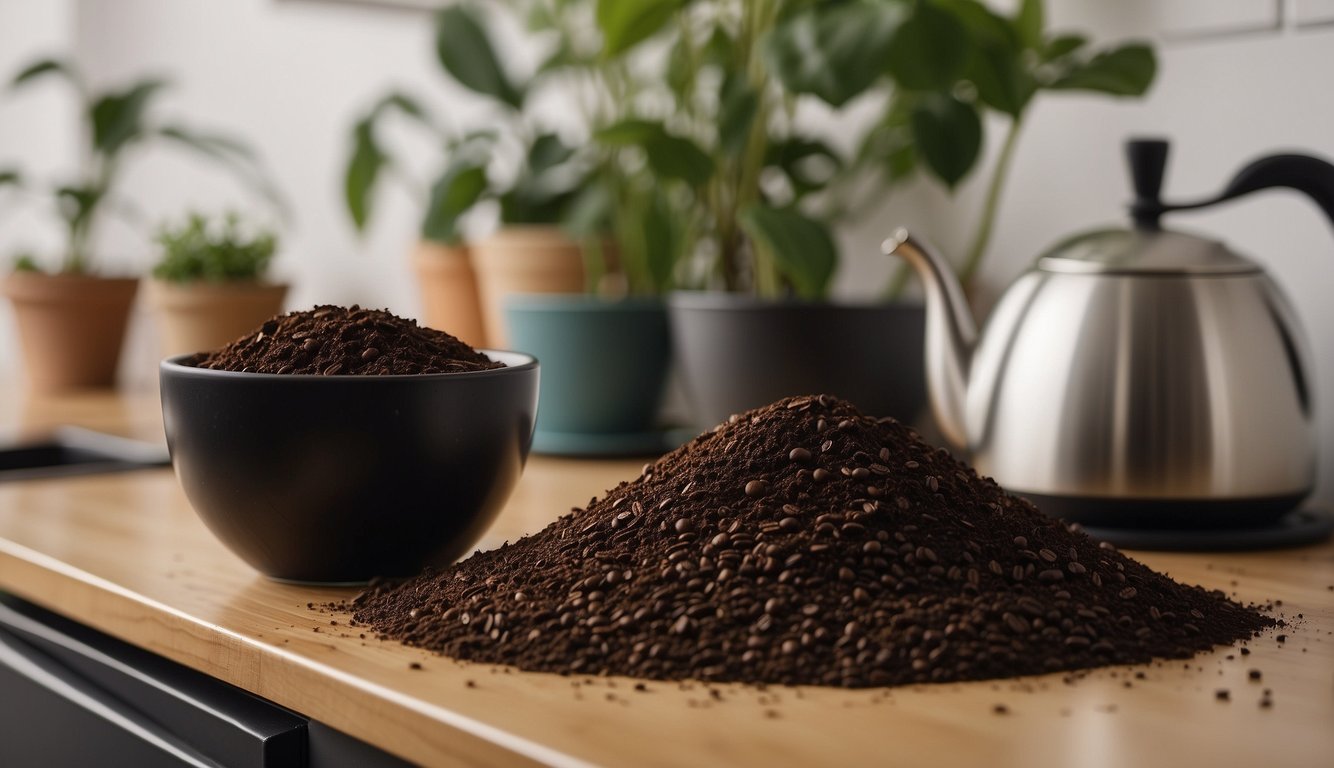
As someone who loves coffee, I always have unused coffee grounds lying around. However, I have found that there are many ways to reuse old coffee grounds in the kitchen. Here are some of my favorite uses for coffee grounds:
Cooking with Coffee Grounds
Coffee grounds can be used as a meat rub for an added depth of flavor. The tannins in coffee can help tenderize meat, making it more succulent and flavorful. Simply mix coffee grounds with your favorite spices and rub onto your meat before cooking.
Another way to use coffee grounds in cooking is as a meat tenderizer. The natural acidity in coffee can help break down tough meat fibers, resulting in a more tender and juicy cut of meat.
I also like to use old coffee grounds as a natural cleaning agent for my kitchen. The gritty texture of coffee grounds makes them perfect for scrubbing tough stains off pots and pans. Simply mix a handful of coffee grounds with some dish soap and scrub away.
Overall, there are many ways to reuse old coffee grounds in the kitchen. From adding flavor to meat to cleaning tough stains, coffee grounds are a versatile and useful ingredient to have on hand.
Pet Care with Used Coffee Grounds – Uses for Unused Coffee Grounds
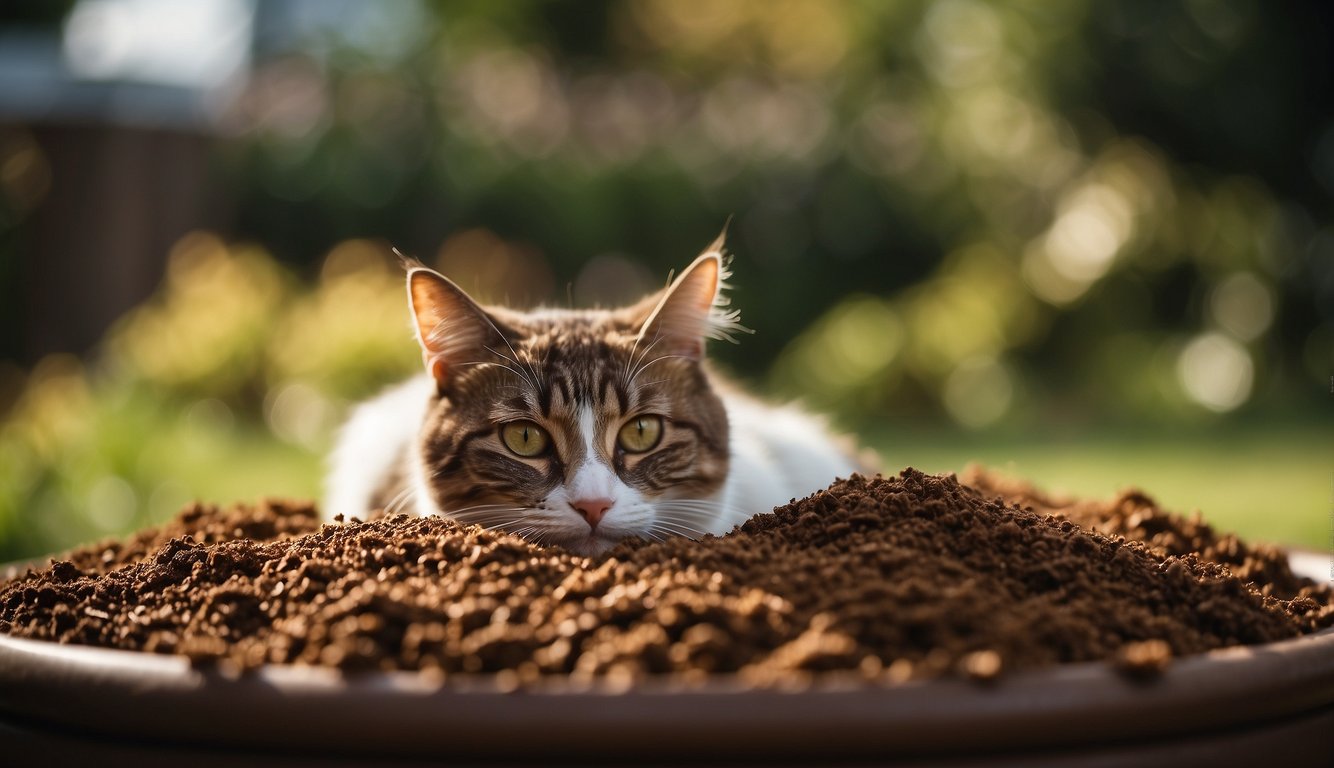
Natural Flea Repellent
As a pet owner, I understand how frustrating it can be to deal with fleas. Fortunately, there’s a natural and inexpensive solution that can help keep your furry friends flea-free: coffee grounds! Used coffee grounds contain caffeine and other compounds that can repel fleas and other pests.
To use coffee grounds as a natural flea repellent, simply sprinkle them around your pet’s bedding and in areas where they spend time. You can also mix the coffee grounds with water to create a spray that you can apply to your pet’s fur. Just be sure to avoid getting the mixture in your pet’s eyes or mouth.
In addition to repelling fleas, coffee grounds can also help repel ants and mosquitoes. So, not only will your pet be flea-free, but your home and outdoor areas will be pest-free as well!
Overall, using coffee grounds as a natural flea repellent is a safe and effective way to keep your pets and home free of pests. Just be sure to use them in moderation and avoid getting them in your pet’s eyes or mouth.
Environmental Benefits – Uses for Unused Coffee Grounds
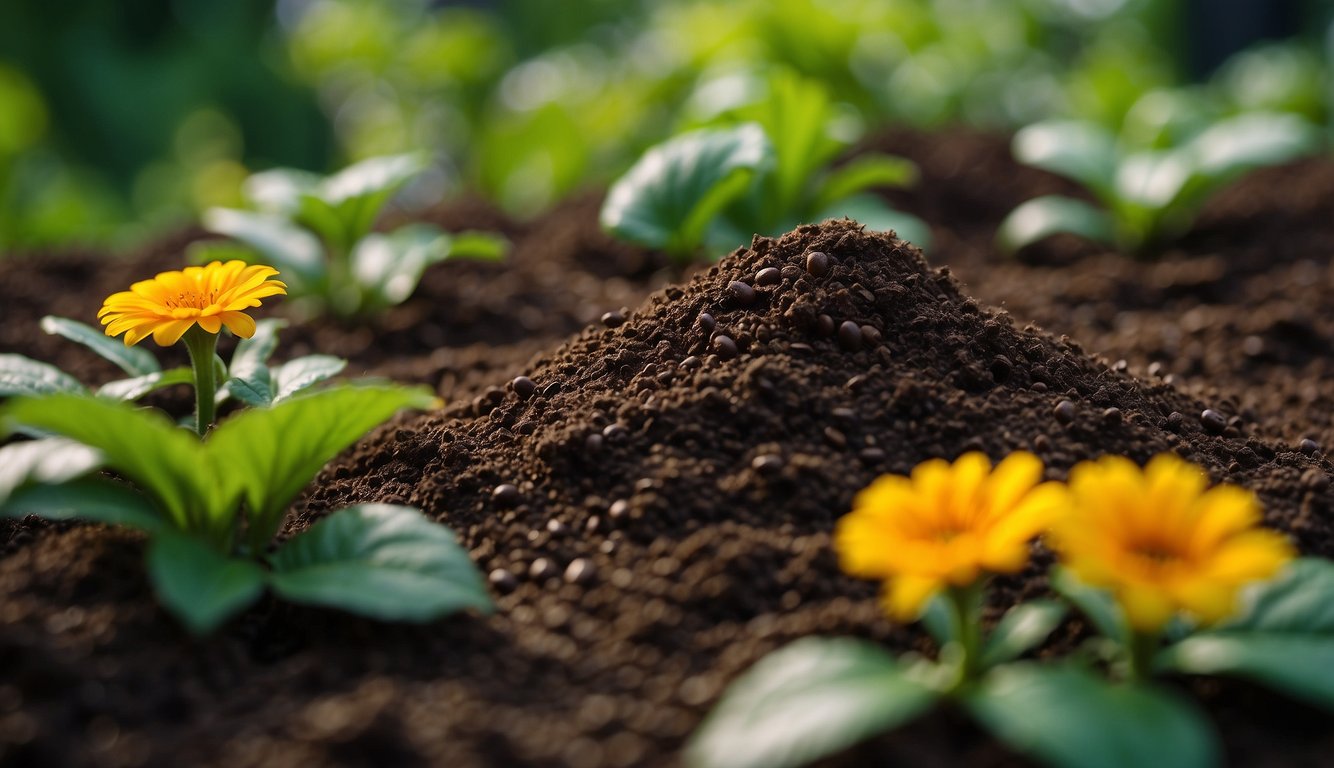
Sustainability and Coffee Grounds – Uses for Unused Coffee Grounds
As a coffee lover, I always feel guilty about throwing away the used coffee grounds. However, I have discovered that there are several ways to reuse coffee grounds, which not only reduces waste but also has environmental benefits.
Coffee grounds are a valuable resource that can be recycled and repurposed in many ways. One of the most significant environmental benefits of reusing coffee grounds is that it reduces waste. By repurposing coffee grounds, we can reduce the amount of waste that ends up in landfills, which helps to preserve the environment.
Moreover, reusing coffee grounds can also help to reduce our carbon footprint. Decomposing coffee grounds release methane, which is a potent greenhouse gas that contributes to global warming. By repurposing coffee grounds, we can reduce the amount of methane released into the atmosphere.
In addition to reducing waste and our carbon footprint, reusing coffee grounds can also help to improve soil quality. Coffee grounds are rich in nitrogen, which is an essential nutrient for plant growth. Adding coffee grounds to soil can help to improve soil quality, which can lead to healthier plants and a more sustainable environment.
Overall, reusing coffee grounds is a simple and effective way to reduce waste, reduce our carbon footprint, and improve soil quality. By incorporating coffee grounds into our daily lives, we can make a positive impact on the environment while enjoying our favorite beverage.
Uses for Unused Coffee Grounds
Got some unused coffee grounds? Don’t toss them out just yet! They’re a treasure trove of benefits waiting to be unlocked.
Firstly, they’re a fantastic addition to your garden. They’re packed with nitrogen, a nutrient that plants absolutely adore. Just sprinkle them around your plants and watch them thrive!
But that’s not all! Coffee grounds can also help keep pests at bay. Slugs and snails don’t quite share our love for coffee. A little sprinkle around your garden, and it’s a no-entry zone for these little critters.
And let’s not forget about composting. Coffee grounds are green compost material, high in nitrogen. Combine them with some brown material like leaves or paper, and you’ve got yourself some top-grade compost.
So, the next time you’re sipping on a cup of joe, remember not to throw those grounds away. Your garden will thank you!
For more eco-friendly tips, do visit the website theherbprof.com.
References – Uses for Unused Coffee Grounds
Little Herb Encyclopedia, by Jack Ritchason; N.D., Woodland Publishing Incorporated, 1995
The Ultimate Healing System, Course Manual, Copyright 1985, Don Lepore
Planetary Herbology, Michael Tierra, C.A., N.D., Lotus Press, 1988
Handbook of Medicinal Herbs, by James A. Duke, Pub. CRP Second Edition 2007
The Complete Medicinal Herbal, by Penelope Ody, Published by Dorling Kindersley
Check the Following Articles!
How to Dry Grass Clippings: A Comprehensive Guide
Compost Starter Homemade: How to Make Your Own?
Get Rid of Black House Ants: Effective Methods
Frequently Asked Questions – Uses for Unused Coffee Grounds
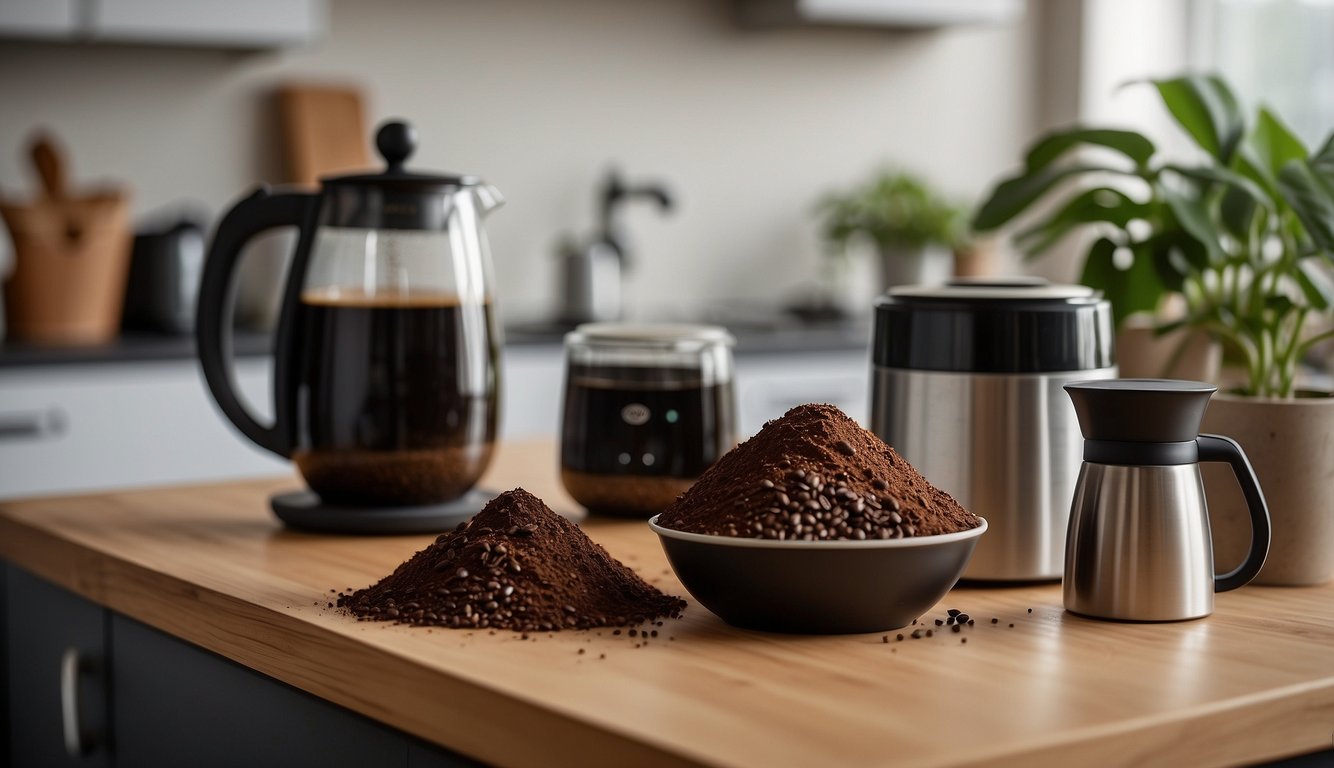
What are the benefits of using coffee grounds in the garden?
Coffee grounds are rich in nitrogen, phosphorus, and potassium, which are essential nutrients for plant growth. They also attract earthworms, which help to aerate the soil and improve its structure. Additionally, coffee grounds can help to repel pests such as slugs and snails.
Can coffee grounds be used to improve skin health?
Yes, coffee grounds can be used as a natural exfoliant to remove dead skin cells and improve circulation. They also contain antioxidants that can help to reduce inflammation and protect the skin from damage caused by free radicals. To use coffee grounds on the skin, mix them with a carrier oil such as coconut oil and apply to the skin in a circular motion.
How can coffee grounds be recycled effectively?
Coffee grounds can be recycled in a number of ways, including composting, vermicomposting, and using them as a natural fertilizer for plants. They can also be used to make homemade cleaning products, or added to the soil in your garden to help improve its structure and nutrient content.
What methods are available for drying and storing coffee grounds?
To dry coffee grounds, spread them out on a baking sheet and leave them in a warm, dry place for several days until they are completely dry. Once dry, store them in an airtight container in a cool, dark place. Alternatively, you can freeze coffee grounds to help preserve their freshness.
Are there any plants that should avoid coffee grounds?
While coffee grounds are generally beneficial for most plants, there are some that should be avoided. Plants that prefer acidic soil, such as blueberries and azaleas, can benefit from coffee grounds, but other plants such as tomatoes and carrots may not do as well with the added acidity.
How can coffee grounds be utilized for lawn care?
Coffee grounds can be used as a natural fertilizer for your lawn, as they are rich in nutrients that plants need to grow. Simply sprinkle the grounds over your lawn and water them in. They can also be used to help repel pests such as ants and fleas.
